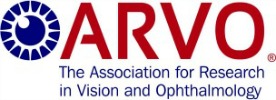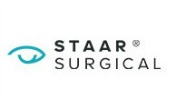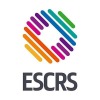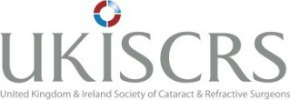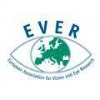For FAQs regarding Coronavirus please click here
Who gets presbyopia?
Presbyopia is a part of the natural ageing process of the eye that starts being noticeable at around 45 years of age and affects nearly everyone by the time they reach 50 years of age. 1.8 billion people around the world (25%) have presbyopia.[footnote]Global Prevalence of Presbyopia and Vision Impairment from Uncorrected Presbyopia: Systematic Review, Meta-analysis, and Modelling.[/footnote]
YOU HAVE BLURRY VISION, ESPECIALLY FOR CLOSE OBJECTS
If you have presbyopia, and already wear glasses for another reason, your glasses prescription will get an ADD (that is typically expressed as a positive number – a “plus” sign, or +). This indicates the degree of presbyopia you have, which expresses how much you experience blurry and distorted vision. In general, the further away from zero the number on your ADD, the worse your eyesight and the more vision correction you need. If you’ve worn glasses before, you may now need varifocals or an additional pair of reading glasses. If you have never worn glasses before, you’ll now need reading glasses.
YOU MIGHT FEEL HEADACHES AND EYESTRAIN AFTER READING OR CLOSE WORK
Uncorrected, your presbyopia can be bothersome. You might have difficulty reading small print, even with reading glasses on. You might experience fatigue from doing close work. You may find you need brighter lighting when reading. You may need to hold screens at an arm’s length distance to focus properly on it. Fortunately, glasses and contact lenses can correct presbyopia. Unfortunately, you may dislike the way your glasses look or feel. Furthermore, they may interfere with your ability to easily switch from distance to near vision tasks.
A DAY IN A LIFE WITH PRESBYOPIA
For those with ageing eyes, the need for reading glasses may signal the onset of middle age. This can be a troubling time because your body and mindset might feel as young as they did in your 30s, but your eyes no longer keep up. Now, you feel dependent on glasses, which may be a feeling you’ve never experienced. You may feel annoyed and frustrated at always needing to bring your reading glasses with you. Putting them on and off and on and off may feel like a daily chore. Losing them may be a constant annoyance. Being without them may feel debilitating.
YOU DON’T FEEL YOU LOOK AS YOUNG AS YOU FEEL
We’re not getting any younger, but that doesn’t mean we want to have to pull out the granny glasses every time we want to read the text on our phones.
DON’T ACCEPT LIMITATIONS
You might feel as fit as you did in your 20s and 30s, so there’s no reason why your eyes shouldn’t be able to keep up. These days, we spend so much time switching between looking at things up close and seeing things far away – why allow your reading glasses to get in the way?
Affiliations and memberships
I am proud to be associated with these organisations as a member or consultant
Supplementary information about Presbyopia
In my expert hands, you certainly don’t need to know all of the information I’ve included in the toggles below. If you’d like to know how it all works, however, open them and learn more.
Take the first step
Find out if your eyes are suitable for vision correction
Book a free screening now or get us to give you a call back to answer questions
Even more information about the condition
I frequently write articles and publish videos to answer people’s most common questions and keep them updated on the latest developments in vision correction. Find out more below…
How long does laser eye surgery last?
If you're thinking about correcting your vision, you may be wondering ''how long does laser eye surgery last?''. Learn more about what to expect, here...
SMILE v LASIK v PRK – What Are the Different Types ?
When comparing SMILE, LASIK, and PRK, it can be easy to get overwhelmed. Here are the key differences between these types of laser eye surgery.
Can I get laser eye surgery?
If you dislike your glasses and contact lenses, you might be wondering "can I get laser eye surgery?" To find out whether you may qualify for this life-changing procedure, read on.
A clear look into the types of laser eye surgery in London
All laser eye surgery has the same general idea - a surgeon uses a laser to reshape your cornea, improving your vision. There are multiple ways a surgeon can do this, though. You need to know if you’re getting the right type of surgery. Take a look at these top types of laser eye surgery in London.
Compare presbyopia with other relevant eye conditions
Eye conditions are frequently misunderstood, so here’s a quick overview of the ones I most commonly treat
ASTIGMATISM
Astigmatism is an imperfection in the shape of your eye’s cornea or lens. Usually, the cornea and lens are round or spherical like a football. In eyes that have astigmatism, the cornea and or lens of the eye are oval in shape like an egg. As a result, light rays focus on a blurred oval shape on the retina rather than as a single sharp image. Learn more about astigmatism…
Treatments for astigmatism
SHORT-SIGHTEDNESS
Short-sightedness is also known as Myopia.
Short-sightedness (or myopia) is an eye condition where the focusing power of the eye is too strong. For that reason, if you’re short-sighted, you need to wear negative power lenses to reduce the focusing power of the eye. Doing so brings the image of the world into focus on our retina. Learn more about short-sightedness…
Treatments for short-sightedness
LONG-SIGHTEDNESS
Long-sightedness is also known as Hyperopia and Hypermetropia.
Hyperopia or long-sightedness is an eye condition where the focusing power of the eye is too weak. For that reason, if you have long-sightedness, you need to wear positive power lenses to increase the focusing power of the eye and bring the image of the world into focus on our retina. Learn more about long-sightedness…
Treatments for long-sightedness
DRY EYE
The term “dry eye” covers many different eye conditions where an imbalance in the volume or quality of the tears results in inflammation and damage to the surface of the eye. Patients have varying degrees of dry eye symptoms from occasional discomfort and stinging to severe pain and inability to see. Learn more about dry eye…
CATARACT
Cataract is the term we use to describe the changes that occur when the lens of the eye loses its transparency and changes from appearing like a crystal clear window to appearing like a misted window like frosted glass. Learn more about cataract…
Treatments for cataract
- Standard Cataract Surgery
- Refractive Cataract Surgery
- Complex Cataract Surgery
KERATOCONUS
Keratoconus is a condition where the cornea, the front window of the eye, becomes thinner, loses its strength and begins to warp out of shape progressively. Learn more about keratoconus…
Treatments for keratoconus
- Cross-linking
- INTACS
- Corneal transplant
RECURRENT CORNEAL EROSION
Recurrent corneal erosion is a painful eye condition where there are episodes of severe pain on waking which resolve over a few days to a week only to reoccur again in the future. Learn more about recurrent corneal erosion…
Treatments for recurrent corneal erosion
- Laser Phototherapeutic Keratectomy (PTK)

About the author
Mr Alex J. Shortt | Consultant Ophthalmic Surgeon
MB BCh MSc PhD FRCOphth PGDipCatRef
I’m Alex Shortt, a highly trained academic researcher and Consultant Ophthalmic Surgeon based in London’s famous Harley Street medical district. I trained and worked as a consultant for 14 years at London’s Moorfields Eye Hospital. I specialise in advanced technologies for correcting vision, including cataract surgery, implantable contact lenses and laser vision correction.



